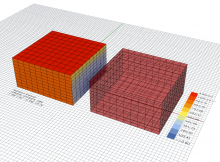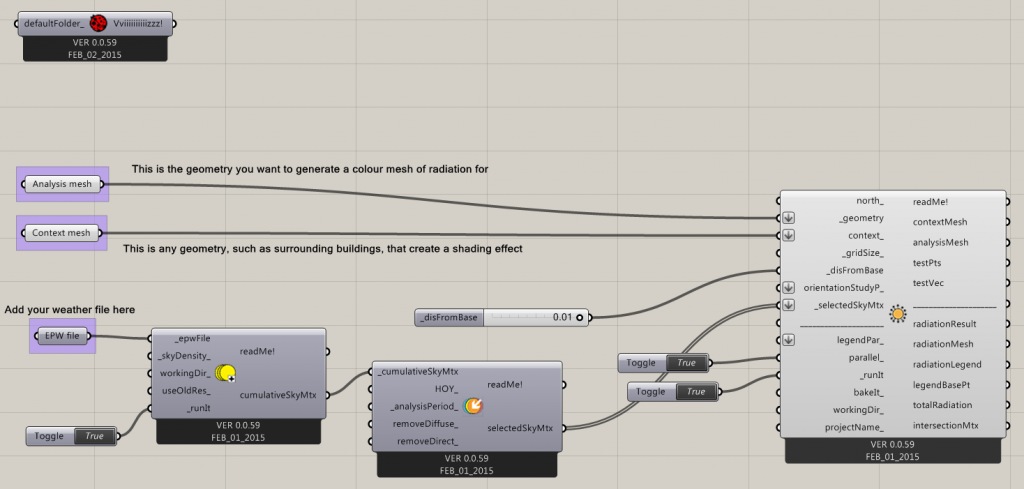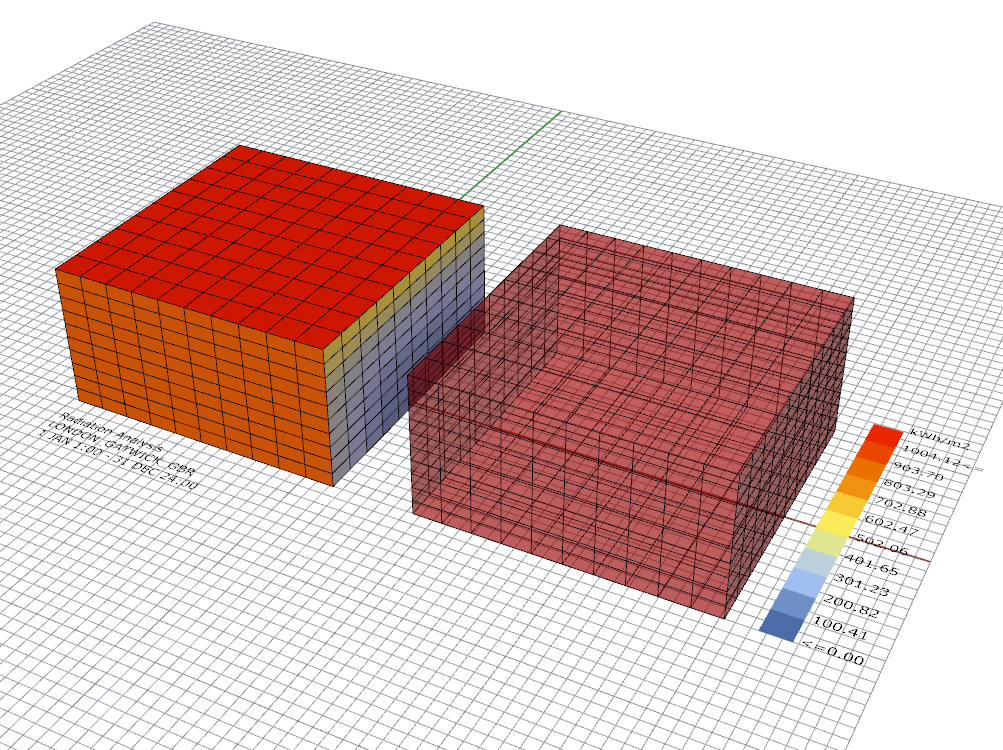How to set up an incredibly simple solar radiation analysis in Grasshopper using the Ladybug plugin. Read this post if you need to install Ladybug.
This example creates a simple shoebox that receives radiation from a sky. It is coloured according to how much radiation it receives across its surface. It is also partly shaded by a shading object (another shoebox) so you can see how to set up shading objects, and see the effect on your measurement objects.
Just follow the picture below! You can also download this GH file with the link at the bottom.
Click the image for full size.
You should get something like the image below. Notice how the context geometry (coloured red at the right) provides shading on the left hand block, producing blue (shaded) results in its shadow.


